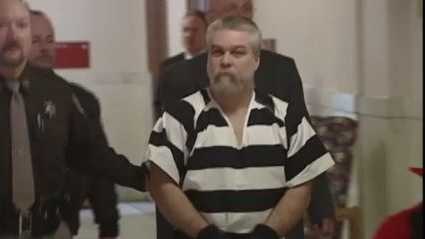Innocence Project continues to thrive despite Avery's murder conviction
The Netflix docu-series “Making a Murderer” has put Steven Avery in the national spotlight. He spent 18 years in prison for a rape he didn’t commit.
Avery was cleared only with the help of the Wisconsin Innocence Project, a group still thriving despite its most notorious client.
In a room at the University of Wisconsin’s law school, law students make calls, write motions and pore through boxes of documents. They’re working to free the wrongly convicted.
“It’s definitely opened my eyes to a lot of flaws to the criminal justice system that I didn’t know of before,” student Sofia Ascorbe said.
“We research the cases,” law student Dan Housh said. “We read through the trial transcripts, the police reports, and we figure out whether there’s a legitimate claim of innocence there.”
Such pain-staking work takes time.
“I’m only here for a year, and we would never get someone out in a year,” Housh said.
But when they do, it can be so rewarding. Since it was founded in 1998, the Wisconsin Innocence Project said it has received some 7,000 requests for help from prisoners. That’s more than one a day. It granted review to 379 of them; 96 of those cases went to court; and 22 of them resulted in a prisoner being freed. None are more infamous than Avery.
“There was never a hint that I saw of him having the capacity for violence,” said Innocence Project co-founder Professor Keith Findley. “He was a sincere, polite, friendly, happy guy.”
Avery wrote to the Wisconsin Innocence Project in 2000. At that time, he had been in prison 15 years for a rape he said he didn’t commit.
“We started looking into it and worked on the case,” Findley said. “We realized there was biological evidence that could be subjected to modern DNA testing techniques.”
Those tests proved Avery did not commit the rape. Findley was there as Avery walked out of prison in 2003.
“It’s incredibly satisfying, but it’s truly bittersweet,” Findley said. “We can give him back his freedom, but you can never give people back their lost and shattered lives the wrongful conviction has produced.”
Two years after Avery was freed, photographer Teresa Halbach went missing. Findley was shocked when Avery was arrested for the crime.
“My heart sank for Teresa Halbach and for her family,” Findley said. “It was just a terrible, terrible blow. Nothing I saw in him ever suggested that such a thing would happen.”
The Wisconsin Innocence Project took so much heat after Avery’s arrest and conviction that the website that touted its success stories had to change.
“It was all creating a terrible insensitivity to the Halbach family that we thought we need to defuse this emotional reaction going on, “ Findley said. “So we took down not just his, but all of our clients’ profiles so we wouldn’t single anyone out for any judgment.”
After Avery was charged with Halbach’s murder, two young filmmakers asked to interview Findley.
“I just assumed it would be another one of those documentaries that maybe gets made, but even if it does, nobody sees it,” Findley said. “I’m really blown away by the splash that it has made.”
The Netflix docu-series “Making a Murderer” has people protesting, taking to social media and signing petitions -- all calling for Avery’s freedom.
“It was kind of ironic,” Findley said. “People were furious then that he’d been freed. Now they’re furious he’s been in prison.”
Findley and his students see the docu-series as a good thing.
“It helps people understand that this is a real problem,” Findley said. “It really happens and it affects real people. It’s not just a statistic.”
"'Making a Murderer’ really isn’t about two people,” Housh. "It’s about a much larger system and failures that can happen in that system."
On its website, the Wisconsin Innocence Project confirms Avery asked them for help again after his murder conviction. But citing attorney-client confidentiality, Findley would not say why they turned him down this time.
And while the profiles of the people who were freed were taken down for a while after Avery’s arrest, his story -- along with those of the other people freed by the Wisconsin Innocence Project -- were put back up on its website a few years ago.
You can view the cases here: http://www.law.wisc.edu/fjr/clinicals/ip/client_profiles.html


